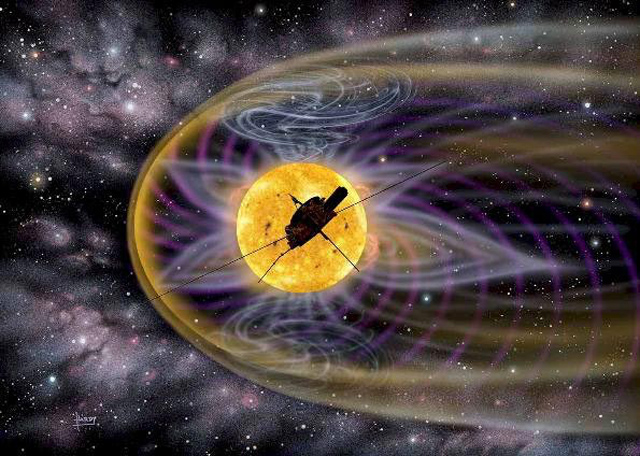Missions
Ulysses

An illustration of the Ulysses spacecraft at Jupiter. Ulysses used Jupiter's powerful gravity to hurl it out of the Plane of the Ecliptic (where most planets and satellites orbit) so it could study the polar regions of the Sun. Credit: ESA/NASA/JPL-Caltech.
Ulysses
- Launched on Oct. 6, 1990
- Successfully operated to Jupiter and made three polar orbits of the sun
- RTG operated for more than 21 years in space until probe was shut down
Powered by:
one GPHS-RTG
Goals:
NASA and the European Space Agency joined forces to send Ulysses to study the heliosphere - the region of space influenced by the sun and its magnetic field - from a unique polar orbit. The spacecraft's ten instruments measured the sun's fields and particles, and its ultraviolet, X-ray and gamma radiation.
Ulysses was the first mission to survey the space environment above and below the poles of our sun. The spacecraft used an unprecedented gravity assist maneuver at Jupiter to hurl itself out of the plane of the ecliptic and into its solar polar orbit.
Accomplishments:
During its 18-year mission, Ulysses made nearly three complete orbits of the sun. The spacecraft's longevity enabled scientists to observe the sun over a longer period of time than ever before. Its six-year orbits over the sun's poles allowed observations our star from an unprecedented angle during both calm and turbulent periods.
The probe revealed, for the first time, the three-dimensional character of galactic cosmic radiation and energetic particles produced in solar storms and the solar wind. Ulysses also made the first direct measurements of interstellar dust particles and interstellar helium atoms in the solar system.
